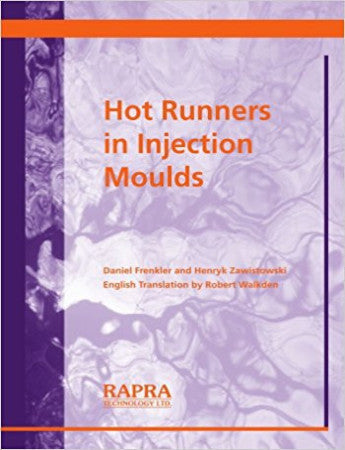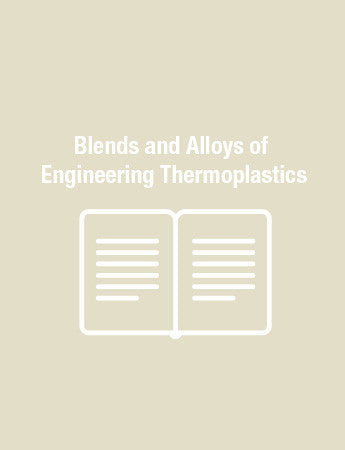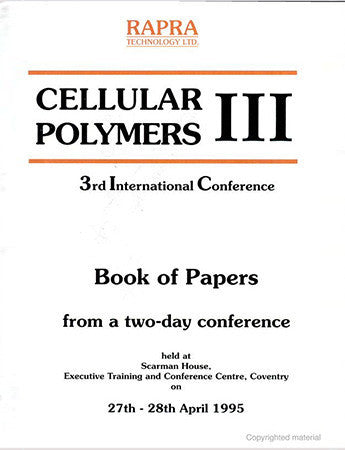Introduction to Automotive Composites
Composites are being used more and more in the automotive industry, because of their strength, weight, quality and cost advantages. In 1998-1999, to further knowledge of composites, the Rover Group in conjunction with the Warwick Manufacturing Group devised a Composite Awareness course. This book is an updated and expanded version of the course notes.
This book is intended to give readers an appreciation of composites, materials properties, manufacturing technologies and the wider implications of using composites in the automotive sector. It will be useful for those already working with composites in automotive applications and for those who are considering using them in the future.
This book is intended to give readers an appreciation of composites, materials properties, manufacturing technologies and the wider implications of using composites in the automotive sector. It will be useful for those already working with composites in automotive applications and for those who are considering using them in the future.
1 What are Composites?
This chapter deals with the properties of composites, the types of composite commonly used for automotive applications and reinforcement with fibres.
2 Polymer Chemistry and Physics
This chapter explains how polymers are formed and how the structure affects the physical and chemical properties of the resulting composite.
3 Composite Ingredients
The differences between thermoplastics and thermosets are discussed.
4 General Properties of Composites
The physical properties of composites, stiffness, strength, and toughness are explained and how these properties influence what sort of composite is obtained. Test methods and manufacturing methods are also covered.
5 How can we use Composites in Car Manufacture?
The reasons for using composites are discussed. Examples are given of the use of composites in specific automotive examples.
6 Manufacturing with Thermoset Composites.
This chapter covers manufacturing methods, such as resin infusion, pre-pregging, resin transfer moulding, structural reaction injection moulding, filament winding, and pultrusion.
7 Manufacturing with Thermoplastic Composites
This chapter discusses manufacturing methods such as log fibre GMT and short fibre injection moulding.
8 Economics of Composites Manufacture
Covers cost analysis, comparison of materials costs and parts integration and modules.
9 What to do with Composites at the end of Vehicle Life.
Mechanical and chemical recycling, thermal conversion and energy recovery are all covered in this chapter.
10 The Future of Composites.
This chapter discusses the advantages of using composites, hypercars, and gives examples of future uses of composites indoors, bonnets and other automotive structures.
11 Design Guidelines for Composites.
This chapter covers designing for composites, including choice of materials.
This chapter deals with the properties of composites, the types of composite commonly used for automotive applications and reinforcement with fibres.
2 Polymer Chemistry and Physics
This chapter explains how polymers are formed and how the structure affects the physical and chemical properties of the resulting composite.
3 Composite Ingredients
The differences between thermoplastics and thermosets are discussed.
4 General Properties of Composites
The physical properties of composites, stiffness, strength, and toughness are explained and how these properties influence what sort of composite is obtained. Test methods and manufacturing methods are also covered.
5 How can we use Composites in Car Manufacture?
The reasons for using composites are discussed. Examples are given of the use of composites in specific automotive examples.
6 Manufacturing with Thermoset Composites.
This chapter covers manufacturing methods, such as resin infusion, pre-pregging, resin transfer moulding, structural reaction injection moulding, filament winding, and pultrusion.
7 Manufacturing with Thermoplastic Composites
This chapter discusses manufacturing methods such as log fibre GMT and short fibre injection moulding.
8 Economics of Composites Manufacture
Covers cost analysis, comparison of materials costs and parts integration and modules.
9 What to do with Composites at the end of Vehicle Life.
Mechanical and chemical recycling, thermal conversion and energy recovery are all covered in this chapter.
10 The Future of Composites.
This chapter discusses the advantages of using composites, hypercars, and gives examples of future uses of composites indoors, bonnets and other automotive structures.
11 Design Guidelines for Composites.
This chapter covers designing for composites, including choice of materials.
Nick Tucker's first involvement in composites was a teenager, making canoes and motorcycle parts, after several adventures in further and higher education he started his industrial career in minerals processing. After reading for a Ph.D. at the University of Bradford based on the control of a reaction injection moulding (RIM) machine, he worked as a contract researcher at PERA. He then manufactured fire-resistant polyurethane foam articles including prison mattresses and the insulating linings for the air conditioning system in Hong Kong International Airport, before moving to the Warwick Manufacturing Group, where he is now the Faraday research fellow. He is now working to provide research and development facilities for small to medium sized enterprises and researching into the manufacture of composites from sustainable origin materials.
Kevin Lindsey studied at Brunel University, where he gained a first-class degree in materials science. After graduation, he took up a position at ICI in the acrylics business group. During this time Kevin started work on developing resin systems for improved mechanical properties, in particular, he developed techniques investigation of fibre/matrix interface adhesion. Kevin continued his studies in this subject at the University of Nottingham where he gained a Ph.D. in mechanical engineering. He then joined the Rover Group where he worked on research projects investigating low mass materials for vehicle bodies, including the SALVO projects with the Warwick Manufacturing Group. He is now a Principal Engineer with Gibbs Technologies Ltd., working on the development of a novel niche vehicle.
Kevin Lindsey studied at Brunel University, where he gained a first-class degree in materials science. After graduation, he took up a position at ICI in the acrylics business group. During this time Kevin started work on developing resin systems for improved mechanical properties, in particular, he developed techniques investigation of fibre/matrix interface adhesion. Kevin continued his studies in this subject at the University of Nottingham where he gained a Ph.D. in mechanical engineering. He then joined the Rover Group where he worked on research projects investigating low mass materials for vehicle bodies, including the SALVO projects with the Warwick Manufacturing Group. He is now a Principal Engineer with Gibbs Technologies Ltd., working on the development of a novel niche vehicle.




